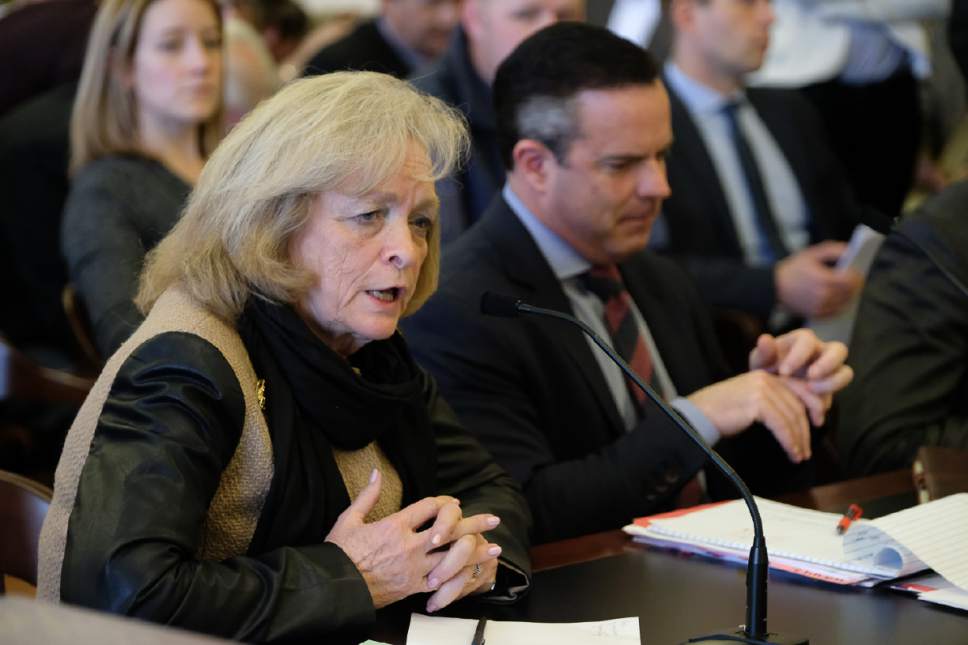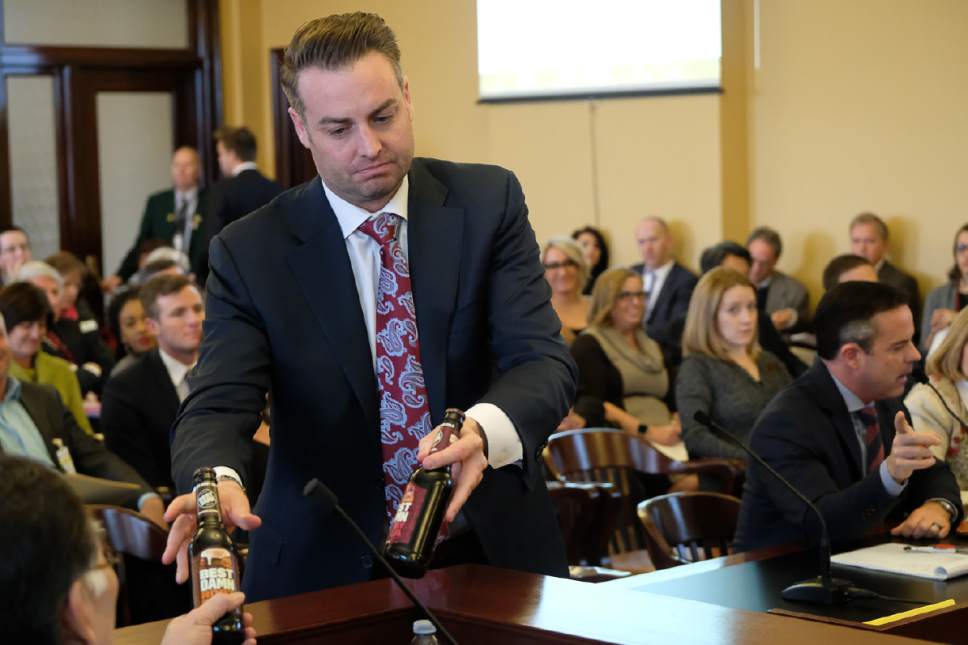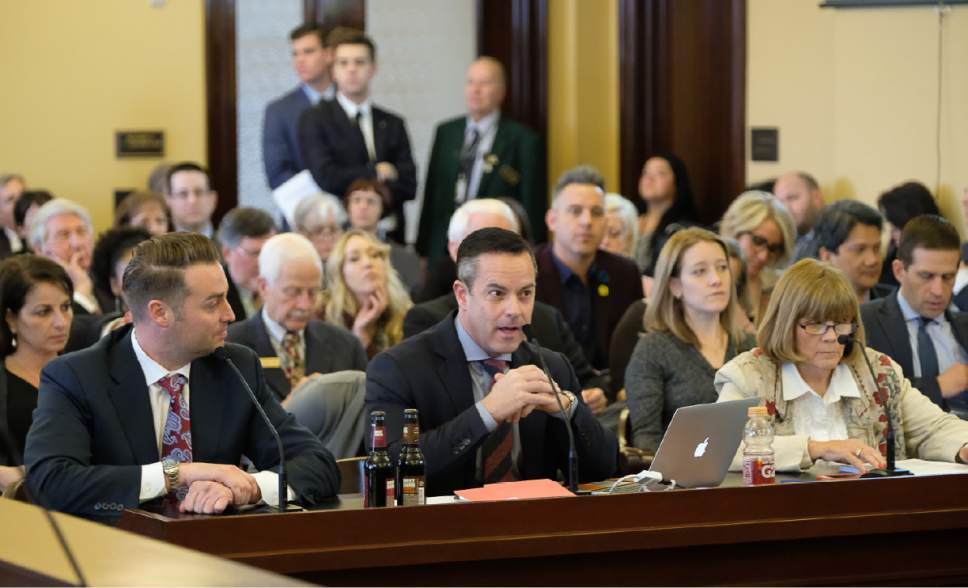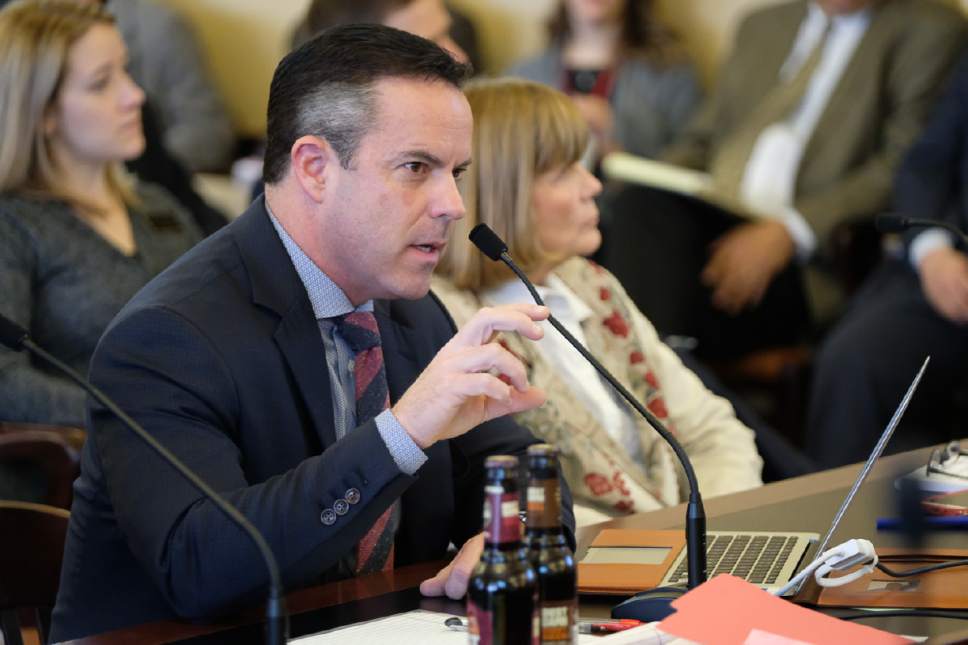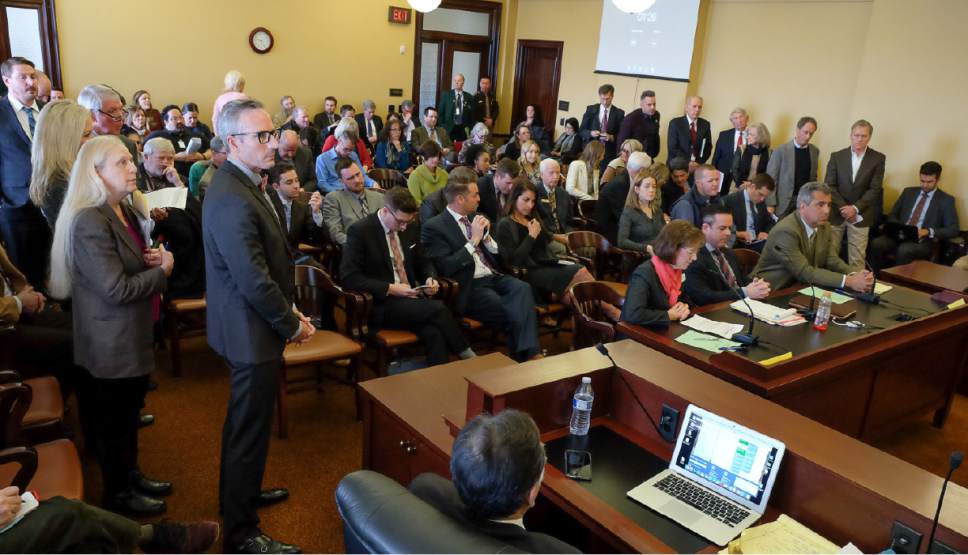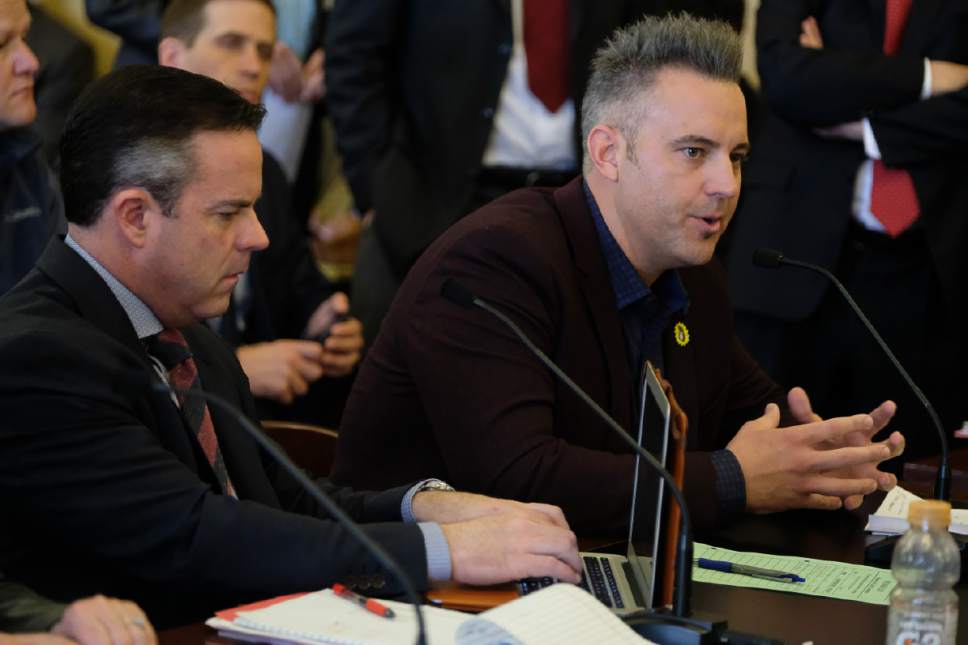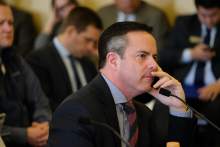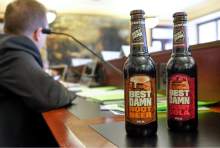This is an archived article that was published on sltrib.com in 2017, and information in the article may be outdated. It is provided only for personal research purposes and may not be reprinted.
A massive bill that would overhaul Utah liquor laws — including aspects of the state's controversial "Zion Curtain" requirement — received as much support as opposition when it was unveiled Wednesday.
Even the sponsor said HB442 needs a bit more tweaking. "But this creates a level playing field for restaurants throughout the state," said Rep. Brad Wilson, R-Kaysville, "and that's a tricky place to get."
The House Business and Labor Standing Committee agreed to forward the bill to the House for more debate.
The committee adopted the latest version, which, among numerous changes, offers Utah restaurants an alternative to having a 7-foot opaque barrier that prevents children from seeing drinks being mixed.
If approved, all restaurants that serve liquor would have three options: Keep the "Zion Curtain" dispensing area that is in place; create a 10-foot buffer from the bar (or edge of dispensing area) where minors are not allowed; or build a half-wall or railing, at least 42 inches high, that creates a delineation between the dining and liquor-dispensing areas.
All restaurants would have to implement one of the dispensing-area options, even older restaurants that have not had to comply with the "Zion Curtain" mandate because they were serving alcohol before 2009, when it was enacted.
Wilson said the alternatives will make it easy for those restaurants to be in line with the new regulations.
The changes would not be immediate, he said. Dining clubs would have until July 1, 2018, to decide if they would switch to being a bar. If they were to decide to be a restaurant, they would have until July 2022 to comply with the barriers and designated dispensing-area rules.
Leaders of the Utah Restaurant Association and the Salt Lake Area Restaurant Association said they support the basic provisions. "We want everyone to play by the same rules and this creates a uniform policy that we would like to have implemented," Melva Sine, president of the Utah Restaurant Association, said during public comments before the committee.
Many conservative groups spoke against the alternatives to the "Zion Curtain."
"We are concerned about removing the barrier. Utah has more children per capita than any other state and they should be our priority," said Laura Bunker, co-director of Family Policy Resource. "We can either put a fence at the top of the cliff or ambulances at the bottom. We have a recipe for success and we should not remove the barriers in restaurants without a compelling reason."
The bill has other provisions buried within its 144 pages. It would boost the state markup on liquor from 86 percent to 88 percent. The markup on heavy beer sold in liquor stores would go up from 64.5 percent to 66.5 percent.
Wilson has said that increase would pay for other drinking prevention and training programs for youths in eighth and 10th grades, as well as for owners and managers of bars and restaurants, and employees who are caught selling to underage youths.
The bill also tightens the restrictions for beer displays in grocery and convenience stores, to prevent confusion between nonalcoholic beverages and flavored beers and ciders, which often have similar labeling. Two of these alcoholic beverages were passed around the committee room to show the labeling similarities.
With so many changes, many industry representatives asked that lawmakers slow the process and take more time to analyze the consequences to businesses.
"Convenience stores have different issues than grocery stores," said Gary Thorup, a lobbyist for the Utah Petroleum Marketers and Retailers Association. "And we'd like make sure they are not adversely affected."


